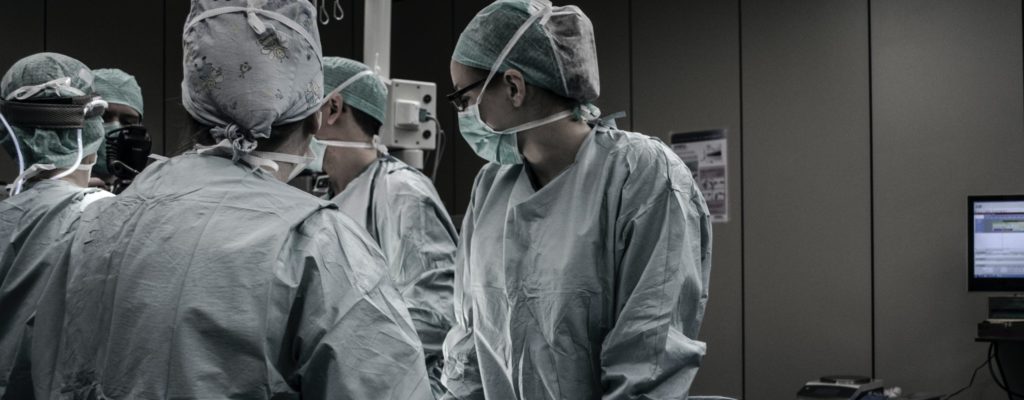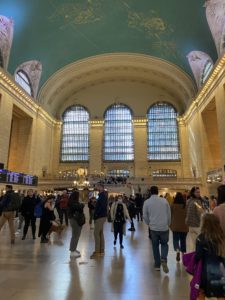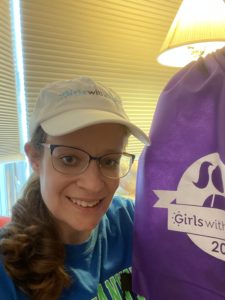Coping | Daily Life | IBD | Uncategorized


An image of crowded NYC in 2023. This is not far different from the NYC the blogger experienced in early March of 2020.
On March 5th 2020, my mother and I traveled to my NYC hospital the same way we had for my previous surgeries. In what had become a routine practice, we took an hour train ride into Harlem 125th Street and then caught a taxi. Increased talk of the coronavirus made us more cautious than usual. We wiped down the train seats and wore masks. Our precautions drew a few stares; most Americans were not concerned about the seemingly distant threat of a viral respiratory disease. In fact, we were the only ones on the train with masks!
We arrived in the busy city that was running as usual. Even the hospital seemed to operate in the typical manner even allowing my mom to join me in the pre-op room! I do not think anyone realized just how much things were about to change.
When I stepped outside the hospital doors a little over a week later, I found myself in a completely different world.
The first thing that stood out to me about this new world was the mask requirement. As an immunocompromised person recovering from major surgery, I welcomed this change with open arms. I had been wearing masks in high density places for a few years. Having others wearing them as well added an extra sense of protection.
My second observation (or realization) was not so pleasant. Of all the things people could hoard, they overwhelmingly chose toilet paper!
Anyone with IBD knows how important it is to have plenty of soft TP in your bathroom. This is especially true after J-pouch surgery. It took my intestines a couple of days to open, but once they did, they were anything but shy.
My new pouch kept me running to the bathroom every 20 minutes with liquid, acidic discharge that felt like fire escaping from my bottom. The skin around my anus (which had been on vacation for nine months) burned, cut, and blistered. Even a gentle tap with the softest toilet paper sent a shooting pain through my body.
Thankfully, my family had some soft TP on hand from before the rush, but I was going through a lot (I don’t care what the commercials tell you, one square is not enough when you have IBD!). I knew it would never last at the rate I was using it, so I needed to start getting creative. I started soaking my bottom in a warm sitz bath and wetting paper towels with water to make them slightly softer. It was not always easy or pain free, but I did what I needed to do to keep my South Pole clean (I think I have heard too many TP commercials)!
The other lifesaver was the barrier cream my wound care nurse gave me shortly before surgery. My nurse instructed me to apply this cream with vaseline every time I went to the bathroom. While the cream helped, I ended up needing to order a more powerful formula. Thankfully, there was no shortage on barrier creams! (Disclaimer: creams only go so far. The powerful cream helped, but I still suffered from significant skin irritation)
The third lockdown-related change I experienced was the fear of in-person care. While struggling to focus on school work during my second day home from the hospital (this was obviously against medical advice, and a poor decision on my part), I suddenly felt something warm and wet running down my stomach. I took a peek to confirm that it was ‘just in my head’ and nearly puked from what I saw.
The lower right corner of my shirt was soaked in crimson. The thick packing I placed on the wound less than an hour before had soaked through. I tried to relax myself and clean up, but the blood kept coming. My mom helped me apply new bandaging and pressure, but the blood kept coming.
It was beginning to look like I might need a trip to the dreaded ER. This was the beginning of the lockdown and the ER– which is already on my short list of places I hate the most– seemed like the most terrifying place. We hemmed and hawed over the decision. We even placed a call to the surgeon’s office and my wound care specialist for direction. We could not get through to anyone!
Fortunately, by some stroke of luck, my wound decided to stop bleeding (I guess my body decided that it had caused enough panic for the day). I am honestly not sure what would have happened if this problem had not miraculously resolved itself. How long would it have taken me to summon up the courage to go to the ER? How much anxiety would that experience have triggered? It is hard to believe that I had taken the relative safety of ERs for granted for so long.
The lack of non-emergency in-person care further complicated my recovery. Within a few days of my hospital discharge, I began experiencing crippling muscle spasms in my anus. I had (and still have) no idea how to accurately describe these awful and strange sensations besides saying that it felt as though I had a bowling ball trying to escape from my anus. Bowel movements did not bring any relief. In fact, I came to fear them. Every BM felt like hot razors were slicing through my skin. This immense pain was rewarded with one or two droplets of discharge and muscle cramps throughout my abdominal region. The pain made everything, including sleep, seem impossible.
I did not think too much of these symptoms. I mean, muscle spasms and pain made sense considering the fact that my anus had been on vacation for the past nine months. I simply took note of the symptoms so that I could bring them up at my post-op appointment at the end of March.
Not surprisingly, my appointment was delayed……….a couple dozen times.
I tried to contact the surgeon over the phone, but was informed that I could not do so without a virtual appointment for which my health insurance refused to cover. I felt completely alone. I spent weeks skimming through complicated medical journals which seemed to be the only source of information on J-Pouch recovery complications.
Based on my research, I seemed to be dealing with anal fissures and some pelvic floor dysfunction. My surgeon agreed with these diagnoses when we finally met in-person. She instructed me to continue the sitz baths and told me about some exercises that could improve the pelvic floor dysfunction. She usually recommended in-person physical therapy to improve pelvic floor function, but this was not a possibility at the time. I did the exercises I could and tried my best to stay positive, but it was a long road to recovery.

Kate shows her GWG pride!
Two and a half years later, I am still amazed by the impact COVID-19 had on our medical system. I have learned to appreciate the relative safety or emergency departments and the benefits of in-person office visits (even if they can be a pain!). I am optimistic that healthcare facilities will be more prepared to handle future disease outbreaks so that they will not be as detrimental to patient care. I have also come a long way in understanding and caring for my pouch. I experience occasional pouchitis flares, butt burn, and pelvic floor discomfort, but the pain pales in comparison to that which I experienced during my first few months of recovery. I am armed with the knowledge, experience, and support that I need to make it through rough patches!
